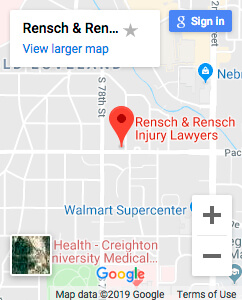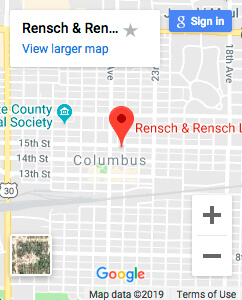How Motorcycle Safety Training Can Help You in a Motorcycle Accident
According to the Insurance Information Institute, motorcyclists are 27 times more at risk of dying in a motorcycle accident than those who are involved in a passenger vehicle crash. Motorcycle riders are vulnerable road users. Riders are more directly exposed to the road, and in the event of a crash, the rider can be at risk of being thrown from the motorcycle, can be at risk of being crushed or directly hit by the other vehicle, and riders are more at risk of sustaining the impact forces of a crash more directly. When riders survive motorcycle accidents, they are more at risk of suffering serious or catastrophic injuries. In Minnesota, motorcycle riders who want to obtain a motorcycle license can use the Skills Test Waiver/Third Party Testing Option by taking a motorcycle safety course with the Minnesota Motorcycle Safety Center Basic Rider Course. The course offers 14.5 hours of instruction, with 10 hours of training on your motorcycle and 4.5 hours of classroom instruction. The course offers training on basic riding skills. More specifically, the course covers topics that include what kind of protective riding gear is best and safest for riders. It also covers risk-management and special situations that motorcycle riders might uniquely encounter.
For example, protective riding gear can help riders be properly prepared in the event of an accident. Wearing a helmet can decrease your risk of serious injury or death in a motorcycle accident. Helmet use may also be able to help you should you need to pursue a personal injury claim following a motorcycle accident. If you injured your head or neck in a crash and weren’t wearing a helmet, this could potentially impact liability in a motorcycle accident claim. Other kinds of gear like jackets, gloves, and riding pants, can also protect you from road rash if you fall off your bike. Road rash injuries can be disfiguring and can be incredibly painful. Wearing proper gear not only protects you in a crash, but it could also be brought in as evidence of your commitment to safety as a rider should you suffer injuries as a result of another driver’s actions behind the wheel.
There are also certain situations on the road where riders might be uniquely at risk. Potholes, gravel, and other types of road debris that may not cause an issue for a passenger vehicle driver, can be incredibly dangerous or deadly for a motorcycle rider. Cars making left hand turns that do not see a rider are also responsible for some of the motorcycle accidents that take place. Informed riders can watch out for hazards like this, potentially preventing accidents before they happen.
The Basic Rider Course can also cover practical skills like controlling the clutch and throttle of your bike, riding in a straight line, turning, shifting, and stopping. While some riders might learn these skills from friends and family, learning these skills properly from a trained instructor can make an immense difference in terms of your skill level on the road, and your preparation for dangerous situations should they arise. Other advanced skills are also taught in the course. These skills include U-turns, counterweighting, counter steering, cornering, and swerving skills. In the event of an emergency situation, knowing these skills can sometimes prevent an accident from being more severe and in some cases might even be able to prevent an accident from taking place in the first place.
Riders might also want to take more advanced rider courses. These advanced courses can cover more nuanced topics and can give riders the training they need to avoid hazardous situations and help them better know how to react when the unexpected occurs. Riders who know more advanced maneuvers may be better equipped to handle dangerous situations on the road.
If you’ve been injured in a motorcycle accident, your personal injury lawyer may also be able to show the courts that you took your motorcycle Basic Rider Course, or took more advanced courses to show that you are a trained rider. The public sometimes has a bias against riders, seeing them as “daredevils” or “risk-takers.” Unfortunately, some riders are seriously injured when other drivers make mistakes behind the wheel. An accident that might be a simple fender bender or rear-end collision involving vehicles could result in serious injuries for a motorcycle rider. Being trained and taking safety courses can show your commitment to safety, which can help dispel some biases, but having a lawyer to advocate on your behalf can also be helpful for your case whether or not you have taken these courses.
If you or someone you love was hurt in a motorcycle accident in Minneapolis, Minnesota, Rensch & Rensch Law is a motorcycle accident law firm that may be able to fight for your rights. Our motorcycle accident attorney can review the details of your case, estimate the value of your claim, negotiate with insurance companies, and fight for your rights inside or outside of court. Contact our attorney today or reach out to USAttorneys.com to get connected with our motorcycle accident lawyers who may be able to help you seek damages for your medical costs, rehabilitation costs, lost wages, and pain and suffering.





